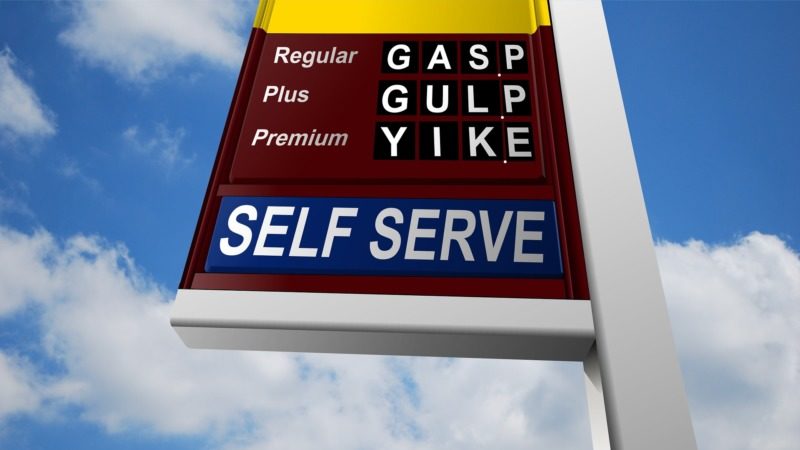
Two-thirds of Canadian drivers say fuel prices will keep them closer to home this summer, according to a new Leger survey for the Tire and Rubber Association of Canada.
The survey finds that 66 per cent of drivers say fuel prices will force them to cancel or limit road trips this summer. Among young drivers aged 18 to 24 that number climbs to 75 per cent.
Eight-in-ten Canadian drivers also believe high fuel prices are here to stay.
The survey also found that Canadians are generally well informed on the impacxt tire inflation has on fuel economy, but few actually practice those tasks:
· Nearly all (97 per cent) understand proper tire inflation is essential to vehicle safety;
· But Only 27 per cent of drivers check their tire inflation pressures monthly, the frequency of measurements recommended by tire makers;
· 93 per cent agree that correct tire pressure saves fuel;
· But 59 per cent are unaware inflation pressures should only be measured when tires are cold. A vehicle should be stationary for at least three hours or not have been driven more than two kilometres prior to checking tire inflation. Measuring pressures when tires are warm gives an inaccurate reading;
· 72 per cent recognize correctly inflated tires lessen vehicle emissions and protect the environment;
· But 34 per cent refer to the air pressure stamped on the tire’s sidewall when identifying the correct pressure for their tires. The imprinted sidewall pressure is the maximum pressure a tire can contain under maximum load, not the recommended inflation level. Prolonged driving at this inflation pressure may result in uneven tread wear and reduced traction. The correct inflation pressure for your tires is on the vehicle placard, which is commonly located on the driver’s door jamb.
Furthermore, as much as 14 per cent either rely on visual inspections or do not know how to determine if their tires are inflated properly. A tire can be underinflated by 20 per cent or more and look normal.
“With these substantial knowledge gaps about tire maintenance, it’s apparent that drivers need more education to improve their fuel economy effectively. With gas prices at all-time highs and no relief in sight thus far, the time has come for all drivers to arm themselves with the knowledge needed to lower fuel costs,” says Carol Hochu, president of TRAC.
“Monthly checks to ensure your tires are correctly inflated are the most effective way to achieve the best fuel economy and extract the most value from your tires. Combined with the right driving habits such as reducing idling, maintaining a steady speed, accelerating gently and coasting to decelerate, these small, simple practices can add up to big improvements in fuel economy. Drivers have the power to fight back against high gas prices by learning these few simple techniques to ensure they are always riding on properly inflated tires.”
Impact of Tire Pressure on Fuel Economy
Industry studies show motorists can improve their gas mileage by 0.6 per cent on average – up to 3 per cent in some cases – simply by keeping their tires inflated to the vehicle manufacturer’s recommended pressure. Additionally, underinflated tires can lower gas mileage by about 0.2 per cent for each one PSI drop in the average pressure of all tires. Driving a vehicle with just one tire underinflated by 56 kPa (8 psi) can increase vehicle fuel consumption by four per cent.
$490 million wasted on fuel
According to Statistics Canada, in 2019 Canadians purchased 43 billion litres of gasoline. With a 0.6 per cent gas mileage improvement resulting from proper tire inflation, drivers would have avoided having to buy 258 million litres of gasoline and saved about $490 million. Saving this much gasoline would also avoid the release of 593,000 metric tonnes of CO2 into the atmosphere, which equals the emissions of 125,000 vehicles in a year. (Based on $1.90 per litre fuel cost between January and April 2022, and one litre of gasoline producing 2.3 kilograms of CO2)
TRAC encourages drivers to learn more about maximizing the fuel efficiency and performance of their tires by visiting https://tracanada.ca/consumers/.
Survey Methodology
A survey of 1,538 Canadian drivers was completed between April 8-10, 2022, using Leger’s online panel. A probability sample of the same size would yield a margin of error of +/-2.5%, 19 times out of 20.
About the Tire and Rubber Association of Canada
The Tire and Rubber Association of Canada (TRAC) is the national trade association representing tire makers, rubber products manufacturers and importers as well as rubber recyclers and suppliers of goods and services related to the industry. TRAC is committed to educating drivers about proper tire care and maintenance. A key advocacy goal in the cold-weather months is to raise awareness about safe winter driving and the safety and performance benefits of winter tires.
Visit https://tracanada.ca/

0 Comments